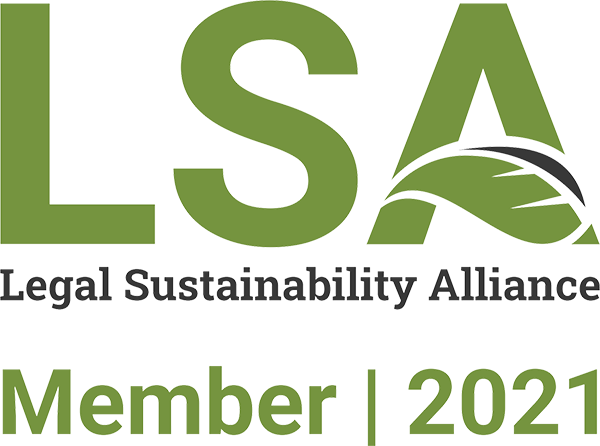fte Energy Regulation and Markets Review Reproduced with permission from Law Business Research Ltd.
ftis article was first published in fte Energy Regulation and Markets Review – Edition 4 (published in June 2015 – editor David Schwartz).
For further information please email Nick.Barette@lbresearch.com
The Energy Regulation and Markets Review
David L SchwartzFourth Edition Editor
Law Business Research Ltd
PUBLISHER
Gideon Roberton
BUSINESS DEVELOPMENT MANAGER
Nick Barette
SENIOR ACCOUNT MANAGERS
Katherine Jablonowska, ftomas Lee, Felicity Bown
ACCOUNT MANAGER
Joel Woods
PUBLISHING MANAGER
Lucy Brewer
MARKETING ASSISTANT
Rebecca Mogridge
EDITORIAL COORDINATOR
Shani Bans
HEAD OF PRODUCTION
Adam Myers
PRODUCTION EDITOR
Claire Ancell
SUBEDITOR
Hilary Scott
MANAGING DIRECTOR
Richard Davey
Published in the United Kingdom by Law Business Research Ltd, London
87 Lancaster Road, London, W11 1QQ, UK
© 2015 Law Business Research Ltd www.fteLawReviews.co.uk
No photocopying: copyright licences do not apply.
fte information provided in this publication is general and may not apply in a specific situation, nor does it necessarily represent the views of authors’ firms or their clients. Legal advice should always be sought before taking any legal action based on the information provided. fte publishers accept no responsibility for any acts or omissions contained herein. Although the information provided is accurate as of June 2015, be advised that this is a developing area.
Enquiries concerning reproduction should be sent to Law Business Research, at the address above. Enquiries concerning editorial content should be directed
to the Publisher – gideon.roberton@lbresearch.com ISBN 978-1-909830-51-6
Printed in Great Britain by Encompass Print Solutions, Derbyshire
Tel: 0844 2480 112
THE LAW REVIEWS
THE MERGERS AND ACQUISITIONS REVIEW THE RESTRUCTURING REVIEW
THE PRIVATE COMPETITION ENFORCEMENT REVIEW THE DISPUTE RESOLUTION REVIEW
THE EMPLOYMENT LAW REVIEW
THE PUBLIC COMPETITION ENFORCEMENT REVIEW THE BANKING REGULATION REVIEW
THE INTERNATIONAL ARBITRATION REVIEW THE MERGER CONTROL REVIEW
THE TECHNOLOGY, MEDIA AND TELECOMMUNICATIONS REVIEW
THE INWARD INVESTMENT AND INTERNATIONAL TAXATION REVIEW
THE CORPORATE GOVERNANCE REVIEW THE CORPORATE IMMIGRATION REVIEW
THE INTERNATIONAL INVESTIGATIONS REVIEW THE PROJECTS AND CONSTRUCTION REVIEW THE INTERNATIONAL CAPITAL MARKETS REVIEW THE REAL ESTATE LAW REVIEW
THE PRIVATE EQUITY REVIEW
THE ENERGY REGULATION AND MARKETS REVIEW THE INTELLECTUAL PROPERTY REVIEW
THE ASSET MANAGEMENT REVIEW
THE PRIVATE WEALTH AND PRIVATE CLIENT REVIEW THE MINING LAW REVIEW
THE EXECUTIVE REMUNERATION REVIEW
THE ANTI-BRIBERY AND ANTI-CORRUPTION REVIEW THE CARTELS AND LENIENCY REVIEW
THE TAX DISPUTES AND LITIGATION REVIEW THE LIFE SCIENCES LAW REVIEW
THE INSURANCE AND REINSURANCE LAW REVIEW THE GOVERNMENT PROCUREMENT REVIEW THE DOMINANCE AND MONOPOLIES REVIEW
THE AVIATION LAW REVIEW
THE FOREIGN INVESTMENT REGULATION REVIEW THE ASSET TRACING AND RECOVERY REVIEW THE INTERNATIONAL INSOLVENCY REVIEW
THE OIL AND GAS LAW REVIEW THE FRANCHISE LAW REVIEW
THE PRODUCT REGULATION AND LIABILITY REVIEW THE SHIPPING LAW REVIEW
THE ACQUISITION AND LEVERAGED FINANCE REVIEW
THE PRIVACY, DATA PROTECTION AND CYBERSECURITY LAW REVIEW THE PUBLIC-PRIVATE PARTNERSHIP LAW REVIEW
THE TRANSPORT FINANCE LAW REVIEW THE SECURITIES LITIGATION REVIEW
www.fteLawReviews.co.uk
ACKNOWLEDGEMENTS
fte publisher acknowledges and thanks the following law firms for their learned assistance throughout the preparation of this book:
AFRIDI & ANGELL ANDERSON MŌRI & TOMOTSUNE
ANGOLA LEGAL CIRCLE ADVOGADOS ARZINGER
AVENT ADVOKAT BASHAM, RINGE Y CORREA BRUUN & HJEJLE
ENGLING, STRITTER AND PARTNERS
- ELIAS & CO GENI & KEBE LAW FIRM
HERBERT SMITH FREEHILLS LLP HOGAN LOVELLS
KOLCUOĞLU DEMIRKAN KOÇAKLI ATTORNEYS AT LAW KVALE ADVOKATFIRMA DA
LATHAM & WATKINS LINKLATERS LLP
LÓPEZ & ASSOCIATES LAW FIRM LOYENS & LOEFF NV
MICHAEL DAMIANOS & CO LLC
Acknowledgements
MORAIS LEITÃO, GALVÃO TELES, SOARES DA SILVA & ASSOCIADOS, SOCIEDADE DE ADVOGADOS RL
MOZAMBIQUE LEGAL CIRCLE ADVOGADOS ORRICK, HERRINGTON & SUTCLIFFE (EUROPE) LLP OSBORNE CLARKE
PELIFILIP PINHEIRO NETO ADVOGADOS
PJS LAW
REM LAW CONSULTANCY RUSSELL MCVEAGH SHALAKANY LAW OFFICE
SOEMADIPRADJA & TAHER, ADVOCATES SOŁTYSIŃSKI KAWECKI & SZLĘZAK STEPHENSON HARWOOD MIDDLE EAST LLP STIKEMAN ELLIOTT LLP
TRILEGAL YOON & YANG LLC
ZUL RAFIQUE & PARTNERS
CONTENTS
Editor’s Preface………………………………………………………………………………………………….. vii
David L Schwartz
Chapter 1 OVERVIEW OF CENTRAL AND WEST AFRICA………… 1
Pascal Agboyibor, Bruno Gay, Doux Didier Boua and Gabin Gabas
Chapter 2 ANGOLA…………………………………………………………… 20
Catarina Levy Osório and Helena Prata
Chapter 3 BRAZIL……………………………………………………………… 36
Marcos Chaves Ladeira, José Roberto Oliva Jr and Carolina Queiroz Pereira Dantas de Melo
Chapter 4 CANADA…………………………………………………………… 50
Patrick Duffy, Erik Richer La Flèche and Glenn Zacher
Chapter 5 CHINA………………………………………………………………. 67
Monica Sun, Hao Su and James Zhang
Chapter 6 CYPRUS…………………………………………………………….. 81
Michael Damianos and Electra Theodorou
Chapter 7 DENMARK…………………………………………………………. 91
Nicolaj Kleist
Chapter 8 ECUADOR………………………………………………………… 101
Ariel López, Daniela Buraye and Paulette Toro
Chapter 9 EGYPT……………………………………………………………… 111
Mariam Fahmy
Chapter 10 FRANCE…………………………………………………………… 121
Fabrice Fages and Myria Saarinen
Chapter 11 GERMANY………………………………………………………. 135
Kai Pritzsche, Sebastian Pooschke and Henry Hoda
Chapter 12 GHANA…………………………………………………………… 148
Emmanuel Sekor and Enyonam Dedey-Oke
Chapter 13 INDIA……………………………………………………………… 161
Neeraj Menon, Rashi Ahooja and Deep Rao Palepu
Chapter 14 INDONESIA……………………………………………………… 176
Mochamad Kasmali
Chapter 15 IRAQ……………………………………………………………….. 194
Salem Chalabi
Chapter 16 ITALY……………………………………………………………………………….. 203
Simone Monesi, Piero Viganò and Giovanni Penzo
Chapter 17 JAPAN……………………………………………………………… 221
Reiji Takahashi, Norifumi Takeuchi, Kunihiro Yokoi, Wataru Higuchi and Yoshihiro Tsutaya
Chapter 18 KOREA…………………………………………………………….. 236
Wonil Kim and Kwang-Wook Lee
Chapter 19 MALAYSIA………………………………………………………. 254
Lukman Sheriff Alias
Chapter 20 MEXICO…………………………………………………………… 264
Juan Carlos Serra
Chapter 21 MOZAMBIQUE…………………………………………………. 275
Fabrícia de Almeida Henriques and Paula Duarte Rocha
Chapter 22 NAMIBIA…………………………………………………………. 286
Axel Stritter
Chapter 23 NETHERLANDS……………………………………………….. 306
Roland de Vlam and Max Oosterhuis
Chapter 24 NEW ZEALAND……………………………………………….. 319
Mei Fern Johnson and Nicola Purvis
Chapter 25 NIGERIA………………………………………………………….. 332
Gbolahan Elias, Okechukwu J Okoro and Chinedu Kema
Chapter 26 NORWAY…………………………………………………………………………. 345
Per Conradi Andersen and Christian Poulsson
Chapter 27 PHILIPPINES…………………………………………………….. 356
Monalisa C Dimalanta and Najha Katrina J Estrella
Chapter 28 POLAND………………………………………………………….. 371
Krzysztof Cichocki and Tomasz Młodawski
Chapter 29 PORTUGAL………………………………………………………. 384
Nuno Galvão Teles and Ricardo Andrade Amaro
Chapter 30 ROMANIA……………………………………………………….. 397
Lucian Caruceriu and Anca Mitocaru
Chapter 31 SENEGAL…………………………………………………………. 410
Mouhamed Kebe and Codou Sow-Seck
Chapter 32 SPAIN………………………………………………………………. 418
Antonio Morales
Chapter 33 TURKEY…………………………………………………………… 434
Okan Demirkan, Zeynep Buharalı and Burak Eryiğit
Chapter 34 UKRAINE…………………………………………………………. 451
Maryna Ilchuk
Chapter 35 UNITED ARAB EMIRATES………………………………….. 469
Masood Afridi, Haroon Baryalay and Adite Aloke
Chapter 36 UNITED KINGDOM………………………………………….. 491
Elisabeth Blunsdon
Chapter 37 UNITED STATES……………………………………………….. 508
Michael J Gergen, Natasha Gianvecchio, Kenneth M Simon and David L Schwartz
Chapter 38 UZBEKISTAN……………………………………………………. 528
Eldor Mannopov, Shuhrat Yunusov, Anna Snejkova and Ulugbek Abdullaev
Appendix 1 ABOUT THE AUTHORS……………………………………… 539
Appendix 2 CONTRIBUTING LAW FIRMS’ CONTACT DETAILS.. 565
EDITOR’S PREFACE
Our fourth year of writing and publishing The Energy Regulation and Markets Review has been marked by significant infrastructure development needs, low oil and gas prices, financial and economic sustainability measures, and carbon reduction programmes.
As many of the world’s economies have begun to regain their financial footing following the global economic crisis, we are seeing a strong focus on infrastructure development. India is heavily engaged in providing economic incentives for the development of generation, transmission and distribution facilities, and many countries have acknowledged significant generation development needs to meet growing demand, including in Central Africa, Egypt, Uzbekistan, Indonesia and Malaysia. In the wake of Russia’s annexation of Crimea, Ukraine is seeking IMF financing assistance to invest in power sector infrastructure, and New Zealand is looking to build large transmission projects.
We have also seen continued efforts to promote sustainability and development of green energy resources. Denmark has created a climate council and new regulatory requirements to encourage development of green energy and to promote conservation. France has adopted an aggressive new energy efficiency and conservation law that includes a new ‘carbon’ tax. fte United States Environmental Protection Agency has proposed a Clean Power Plan to limit CO2 emissions from existing generation facilities by 30 per cent by 2030. At the same time, however, a federal court of appeals in the United States has determined that the Federal Energy Regulatory Commission (FERC) had no authority to treat demand responsiveness (a form of conservation) with the same economic value as generation. Korea has been exploring eco-friendly sources of energy independence, and Brazil has encouraged renewable energy development to make up for reduced hydropower in recent years. Even China appears to be working to develop clean, safe and sustainable energy that reduces reliance on coal generation.
Oil and gas prices remain low, which appears to have allowed largely energy- dependent countries (such as Japan) to secure longer-term oil purchases, but appears to have had negative impacts on countries that largely rely upon oil export revenues, such as Russia, Angola and Iraq. Efforts to reduce reliance on nuclear generation continue to create demand for other energy sources in Germany, Japan and France.
Editor’s Preface
We have seen significant energy sector regulatory reforms in many countries. In Spain and Portugal, there have been efforts to reduce the tariff deficit and promote financial and economic sustainability. Poland has worked to reform its regulatory system to encourage competition and development, while, at the same time, protecting state- owned companies from hostile takeovers. Romania has sought to encourage competition and reduce political interference with the regulatory process. fte United States has continued to struggle with how to allocate transmission costs fairly and efficiently under FERC’s Order 1000.
Certain countries have continued their efforts to privatise state-owned companies. Turkey has engaged in an effort to privatise its generation facilities. Cyprus is continuing its efforts to privatise its state-owned utility company. India is privatising its coal mines, and Mexico is encouraging private oil companies to bid for exploration and production rights.
On the nuclear energy front, Turkey has moved forward in its efforts to develop
its first nuclear generation facility. At the same time, Japan and Korea have sought to reduce their reliance on nuclear energy, and Germany has continued on its path to shut down all nuclear facilities, all in the wake of the 2011 events at the Fukishima facility in Japan.
I would like to thank all the authors for their thoughtful consideration of the myriad of interesting, yet challenging, issues that they have identified in their chapters in this fourth edition of The Energy Regulation and Markets Review.
David L Schwartz Latham & Watkins LLP Washington, DC
June 2015
Chapter 30
Lucian Caruceriu and Anca Mitocaru1ROMANIA
I OVERVIEW
Compared to previous years, 2014 has seen fewer significant changes in the regulations applicable to the Romanian energy sector.
fte lack of fundamental changes to the rules governing the field may be seen as a good aspect in a market recently shaken by legislative changes with a material negative impact on some of the market players (e.g., investors in renewable projects, financing banks, etc). On the other hand, the lack of a long term strategy in the field limits development and creates a degree of uncertainty.
Nevertheless, the Romanian energy sector remains a rapidly evolving one, including from a legislative and regulatory perspective.
II REGULATION
i fte regulators
Regulators
In addition to the Parliament and the government, which have the main legislative and regulatory powers in any field, there are several regulatory authorities with power within various energy sectors. fte main ones are:
- the Energy Field Regulatory Authority (ANRE), an autonomous public body controlled by Parliament, with powers in the electricity, heat and gas sectors;
- the National Natural Resources Authority (ANRM), a specialist body under the coordination of the Romanian government, regulating the activities related to natural resources, oil and shale gas; and
1 Lucian Caruceriu and Anca Mitocaru are associates at PeliFilip.
- the National Authority for the Regulation of Public Community Services (ANRSC), a public institution of national interest subordinated to the Ministry of Regional Development and Public Administration, regulating and monitoring the activities of public utilities (central thermal energy).
A separate specialist regulator deals with nuclear power plants. fte Ministry of Economy (re-shaped in 2015 to include the former Department of Energy along with the Department for Small and Medium Enterprises, Commerce and Business Environment) is also involved in the energy field, supervising the privatisation process of state-owned companies, also being the representative of the state holding the state participation in companies in the sector.
Legal and regulatory field
fte legal and regulatory framework in the energy field comprises several categories of enactments:
- laws, passed by the Parliament;
- ordinances (which essentially have a force equivalent to that of laws), passed by the government;
- decisions issued by the government in relation to the implementation of various laws and ordinances; and
- orders, decisions and other similar acts issued by the relevant ministries and regulatory authorities.
ii Regulated activities
fte development, construction and operation of projects in the energy field require various authorisations and permits. Activities such as the sale of electricity and gas may, in principle, be carried out only by licensed entities. Similarly, various activities in the fields of mining and exploration and exploitation of natural resources require permission, concession or licence.
fte permissions procedure – especially for the more complex projects – tends to be intricate and time-consuming, with a substantial number of permits having to be obtained. Moreover, due to a lack of centralisation, several regulatory authorities (in addition to those relevant to the energy sector) are usually involved. By way of example, the development, construction and operation of a power plant typically requires a rather extensive set of permits, authorisations and licences. In the development and construction phase, these include:
- urbanism certificates and building permits issued by local administrative authorities (city hall or county council);
- environmental approvals issued by the specialist environmental authority;
- various permits and approvals issued by entities such as the Romanian Intelligence Service, the Ministry of Defence and the Aeronautical Authority;
- grid connection permits; and
- setting-up authorisations.
fte permits relevant for the development and construction phase are issued within a certain period (typically 30 to 60 days) from the submission by the applicant of the complete authorisation file. In the event the authorities are not satisfied with the documents received, they may ask for further information and clarifications. fte documents to be submitted differ from a permit to another. For example, for the civil construction permits (i.e., building permits), the applicant must submit evidence of in rem rights secured over the plots of land on which the power plant project is to be developed.
fte issuance of the relevant permits is subject to the payment of tariffs, the amount of which varies from a certain fixed value set by the authorities (such as for the setting-up authorisation) to a percentage of the value of the intended construction works (as is the case for building permits).
Additional permits must be obtained for the operations phase, including a licence for the production of electricity and an environmental authorisation. fte relevant entity may apply for the licence after completion of the construction works and the connection of the project to the electricity grid, but before commencing the commercial exploitation of the power plant. Typically, regulatory authorities would issue the licences and authorisations for the operation phase within 30 to 90 days from the date when the complete documentation is filed and the relevant fee is paid.
In addition, producers of electricity from renewable sources must comply with formalities in order to be accredited for being granted green certificates in accordance with the support scheme.
Activities in the electricity and gas fields also require specific permits, such as supply, distribution, transmission and storage (of gas) licences. ftese energy-specific permits are issued by ANRE to entities fulfilling certain criteria, usually within 60 days as of submission of the complete application documentation.
Activities involving mineral resources are performed on the basis of various licences and permits issued by ANRM, depending on the type of activity (e.g., exploration and exploitation). In principle, exploration and exploitation permits and licences are granted following a public tender procedure, with the possibility of the direct award of licences or permits in certain circumstances.
Obtaining the mining licences in relation to which tender procedures must be followed usually takes a longer time (e.g., several months).
fte holder of an exploration licence can automatically benefit from an exploitation licence for any or all of the mineral resources detected on the exploration perimeter.
Exploitation permits are granted on a first-come first-served basis, subject to the regulatory conditions being met. Obtaining an exploitation permit on a different perimeter is conditional upon fulfilling the environmental rehabilitation duties in the previously exploited perimeter(s).
Moreover, the holder of a prospection permit benefits from an additional benefit when attending a public tender for the issuance of an exploration licence (but only for the perimeter where such applicant performed the prospection activity).
iii Ownership and market access restrictions
Certain requirements under Romanian law which have been seen to a certain extent as limiting the direct access of foreign entities to the Romanian energy market have recently been amended. ftus, for example, until March 2015, foreign companies holding an electricity supply licence issued in its home state was able to perform electricity supply and trading activities in Romania on the basis of that licence (without having to obtain another one in Romania), only if a bilateral agreement regarding the mutual recognition of the validity of supply licences between Romania and the respective foreign state was concluded. In practice, the provision was not applicable because no such bilateral agreements had been concluded.
Following recent amendments to the licensing regulations in the energy field, foreign legal entities from an EU Member State wishing to conduct power supply and trading activities in Romania may do so:
- on the basis of the licence or a similar document issued by the competent authorities in the relevant EU Member State; and
- provided that it submits an affidavit undertaking the obligation to comply with all the applicable technical and commercial regulations in
However, the rule is expected to be followed by additional regulations enacted by ANRE on how the above mechanism will actually be implemented.
In 2014, the European Commission (EC) also finalised an investigation on the basis of which it applied a fine to Opcom SA and Transelectrica SA (its mother company and power transmission system operator). fte EC found that Opcom abused its dominant position by requiring that foreign entities which wanted to register on the day ahead market for the wholesale trading of power had to obtain a Romanian VAT number. Following this sanction, Opcom changed its practice and the applicable registration rules.
iv Transfers of control and assignments
A change of control over a company performing a licensed activity may trigger the obligation to notify certain regulatory authorities. fte transfer of (material) relevant assets would entail the prior written approval of the regulatory authority that issued the sector-specific licence. In general, the transfer of licences cannot be performed without the consent of the issuing authority, which sometimes actually involves the re-issuance of the licence. ftese aspects are relevant in several scenarios, including in the project financing context, with respect to the enforcement of mortgages over the relevant assets or licences created in favour of a financing party.
In the case of corporate restructuring processes (e.g., mergers or spin-offs), such regulatory approvals may also need to be obtained and, in certain cases, the applicable legislation expressly provides that the relevant licences or permits must be amended as an effect of corporate restructuring, or the licences can be actually transferred to the new entity resulting from the corporate restructuring process. Typically, this procedure may last up to several months.
In addition to the sector-specific regulatory requirements, a change of control in or sale of assets by entities that carry out activities subject to environmental authorisations have to be notified to the environmental authority, together with any arrangements entered into between the selling and purchasing entities with regard to the allocation among them of the environmental obligations. On this basis, the environmental authority may then decide if any authorisations or permits already issued to the relevant entities need to be amended.
fte sale of shares or assets may also be subject to Competition Council clearance.
III TRANSMISSION/TRANSPORTATION AND DISTRIBUTION SERVICES
i Vertical integration and unbundling
fte energy sector has undergone multiple changes in recent years, many affecting the energy infrastructure, mainly due to the reforms needed to adapt Romanian legislation to incorporate EU norms. ftus, in the field of electricity, Romania authorised a single, majority state-owned transmission system operator (TSO), responsible for providing system services, drafting grid investment plans and cooperation with other European TSOs.
Electricity distribution activities are undertaken by eight different companies that have been granted concession agreements in eight main distribution areas. Electrica, which controls three of these companies, has been the subject of a successful initial public offering carried out during 2014 on the London and Bucharest stock exchanges. In the natural gas sector, Romania also authorised a single state-owned transport operator responsible, inter alia, for the elaboration of development and investment plans and ensuring interconnection with European and international gas corridors. Natural gas distribution is carried out on the basis of concession agreements. Currently,
39 companies are active in the distribution sector.
In the oil sector, the major players are private entities, except for the company that manages the state pipeline infrastructure for transport, which is still majority state-owned.
Refining activities, along with the distribution of oil products and LPG, are mainly undertaken by companies or groups of companies active in several sectors in the field, including exploitation, refining and the sale of oil products.
In line with the EU rules, the Romanian legislation imposes the obligation of unbundling distribution of electricity and other electricity activities. In the field of natural gas, the same unbundling principle applies.
Apart from the oil transport operator, which undertakes only the transport activity, the rest of the companies active in the oil sector are typically vertically integrated.
In the electricity sector, limited and rather local investments in transmission and distribution capacities have been undertaken during the past years when the interest for renewable energy capacities was high. fte radical changes in the support scheme for renewable energy decreased the interest for renewable projects and, as a result, for the related investments in transmission and distribution capacities.
In the gas sector, after the failure of the plans regarding the Nabucco and South Stream projects, Romania turned its attention towards the means available to fund, build, develop and modernise the natural gas transmission grid and the interconnection points with neighbourhood countries. Some projects in this respect have been included in the EU list of Projects of Common Interest covering the period 2014–2020, or are financed through the European Energy Programme for Recovery. One example is the Aegean Baltic Corridor Project, designed as an initiative to interconnect the gas transport systems of South East European countries.
ii Transmission/transportation and distribution access
Romanian legislation regulates the principles of transparent, non-discriminatory and regulated access to transport and distribution grids. In reality, however, access may in some cases be limited by the capacity and poor physical status of the relevant grid. ftis proved to be the case recently in the electricity field. fte massive interest in renewable projects led to the limited capacity of the electricity distribution and transmission grids being overbooked. ftis further led to rather costly grid reinforcement works in order to ensure the connection of new projects. In practice, the developers of the respective projects had to bear (at least temporarily) a substantial part of these costs.
Competition is required and sustained in all energy sectors in Romania, but transmission activities largely remain a monopoly, in line with the practice in other EU states. Competition in the distribution sector for both electricity and gas is also limited due to separated concession areas and the fact that tariffs are regulated.
Usually, transmission, transportation and distribution services are carried out on the basis of concession agreements granting exclusive rights in the relevant area or in relation to certain infrastructure assets. In the electricity distribution sector, for example, distribution licences may be granted to third parties only with the consent of the entity holding an exclusive concession in the respective area.
iii Terminalling, processing and treatment
Romanian legislation provides the creation of underground storage facilities for gas as well as the possibility of exploitation licence holders in the oil sector to hold storage capabilities, based on a special licence. fte storage of natural gas is the responsibility of licensed operators that have to fulfil a series of obligations, such as granting non-discriminatory access to storage facilities on a first-come, first-served basis to operators included on a priority list, and not to block the quantities stored. Natural gas transport operators also have the obligation to hold and maintain sufficient quantities of natural gas in order to ensure the balance of the national transport system.
fte processing and treatment of natural gas, regulated mainly through a technical code setting out the conditions for the operation of companies active in this field, suffered some amendments which aim at improving the balancing rules on the gas market and at regulating the virtual trading points.
Oil storage can take place on the basis of an oil storage licence.
Romania has also established an obligation for producers and other operators that sell or buy oil products to establish minimum stocks. fte minimum stocks are determined each year by the Ministry of Economy and the operators concerned may delegate the responsibility for at least 10 per cent of the storage to other parties.
According to the law, the threshold of 10 per cent shall be progressively raised up to 30 per cent by the end of 2017. fte LNG technical code regulates the design and construction of LNG facilities. It determines, among others, the location, testing and operation principles, as well as the design and construction methods and techniques. Alongside this technical code, several pieces of secondary legislation and international technical standards are used in order to assess the proper functioning of LNG facilities. fte operation of these facilities is a licensed activity.
fte tariff for natural gas storage is also regulated. It is set annually by ANRE, based on a predetermined regulated income for the storage operator. fte national regulator can take into account the development of the open market in order to determine prices for certain geographical areas. fte national regulator can adjust the regulated prices, based on the usual economic factors, such as inflation and contingencies, or based on specific factors, such as the total quantity of stored gas.
fte operation of natural gas storage facilities is also regulated with respect to access to storage facilities (e.g., a list is set up on a first-come, first-served basis), the level of the reserved capacity, and safety requirements.
iv Rates
ANRE determines the tariff for transport and distribution of electricity and gas, based on a predicted and approved regulated income for transport and distribution operators.
For the electricity sector the tariffs and costs associated to transport, distribution and system services are determined by the national regulator, for each voltage level, taking into consideration the providers’ costs plus a reasonable rate of return, based on a methodology that aims to ensure compliance with principles such as the prevention of unreasonable advantages and the efficient use of the existing infrastructure. In addition, the national regulator can choose to establish different tariffs for each geographical area or administrative unit. In this respect, the Romanian Competition Council which has recently released its report following the investigation on the electricity market concluded that there are no objective grounds to support the differentiation of the tariffs throughout Romania and recommended that the authority change the price mechanism. Before that, following an infringement procedure initiated by the EC, ANRE has eliminated the tariffs for import and export of electricity inside the EU.
For the gas sector, tariffs for the underground storage of natural gas cover three main regulated components: the price for reserving the storage capacity, the price for the injection of natural gas in the underground facility, and the price for the extraction of the stored quantity. fte tariffs for transport and distribution services are determined by the national regulator in order to reflect the costs for reserving transport capacity and for effective transport service and maintenance of the transport system.
Tariffs for the transport of oil are regulated by ANRM, while tariffs for storage and distribution of oil are not regulated and therefore depend on market factors.
iv Security and technology restrictions
Romania developed a national strategy for the protection of critical infrastructure in order to comply with its obligations at EU level. ftis strategy considers the substantial risk posed by potential terrorist actions but also the possible impact of a lack of supply independence on the overall functioning of society.
Each operator of critical infrastructure, identified as such by competent public authorities, must have an internal department charged with outlining and implementing its own emergency plan. ftis emergency plan must be tested every two years in cooperation with public authorities and adapted to latest security methods.
Following a series of cyber attacks, at the beginning of 2013 Romania adopted a national cybersecurity strategy to identify possible cyber attacks against critical infrastructure. fte strategy intends to clearly identify potential threats, educate the personnel in charge of protecting critical infrastructure from cyber attacks, and promote cooperation at EU and international level. fte National Computer Security Incident Response Centre is the institution dealing with the identification of cyber security threats in Romania, and is in charge of developing fast reaction countermeasures.
IV ENERGY MARKETS
i Development of energy markets
Each of the electricity and natural gas sectors cover a regulated market and a competitive market. As the liberalisation efforts continue, the competitive markets should continue to expand. fte competitive market itself comprises a retail market and the wholesale market.
Following certain changes in legislation that came into effect in 2012, electricity may be traded only on the centralised platforms operated by Opcom (a subsidiary of the TSO). No bilateral electricity trading agreements may be concluded over-the-counter. In its recently issued report following the electricity market investigation, the Romanian Competition Council recommends that the ‘over-the-counter’ trading interdiction be removed or at least amended because it creates barriers to electricity export.
fte centralised electricity trading platforms comprise the day-ahead market, the intra-day market, the centralised market for bilateral contracts (itself with three separate sub-platforms), the centralised market for bilateral contracts with double continuous negotiation (a platform meant to somewhat cover the needs created by the prohibition of OTC transactions), the centralised market for universal service (dedicated to suppliers of last resort) and the electricity market for large consumers (dedicated to consumers with an annual consumption above 70,000MWh). On these markets prices are usually determined on the basis of purchase and sale offers and on the day ahead and intra-day markets. Opcom acts as central counterparty and settlement agent.
While these rules have been passed with the public intention of making the electricity trading market more transparent and competitive, the immediate effects actually included increased difficulties in financing new electricity production projects (such as renewable projects) due to the impossibility to conclude long-term electricity purchase agreements. Some of the platforms still need adjustments to adapt to the needs of the market participants which no longer had access to bilateral electricity purchase agreements. Participants to the electricity market must undertake financial responsibility towards the TSO for any imbalances their activity potentially generates in the National Electricity System by registering as balancing-responsible parties or transferring the balancing responsibility to already established balancing responsible parties.
On the competitive wholesale natural market, gas may be traded either on the basis of over-the-counter bilateral agreements or on two new centralised trading platforms managed by Opcom and the Romanian Commodities Exchange Market (RCEM). Similar to the electricity market, certain limitations to trading have been imposed on the gas market so that the gas market participants are now under the obligation to trade via the centralised platforms part of the natural gas volumes, corresponding to domestic consumption. fte limitation will end on 31 December 2016 for suppliers and on 31 December 2018 for producers, in correlation with the anticipated date for the full liberalisation of the natural gas market. fte trading results on centralised markets so far show a rather low liquidity on the relevant platforms, which may also be the effect of existing bilateral agreements concluded prior to the entry into force of the above limitation.
Oil and coal may be traded through bilateral agreements concluded on the RCEM.
ii Energy market rules and regulation
fte rules applicable to electricity trading on the competitive markets are set by ANRE and Opcom. fte import and export of electricity is possible subject to the prior allocation of interconnection capacity based on public auctions organised pursuant to an operational procedure prepared by the TSO and approved by ANRE. In 2014, Romania joined the 4M Market Coupling project which consists mainly of price coupling of the day-ahead markets in the region, namely Romania, the Czech Republic, Slovakia and Hungary. By joining this project, Romania aims to secure higher security of supply, liquidity and stability of electricity prices. So far, cross border transactions resulted in volumes of electricity imported from Hungary which are substantially higher than those exported to Hungary.
In the gas field, specific regulations are applicable with respect to matters such as the obligation of Romanian gas producers to allocate part of their production for internal regulated consumption and the obligation of gas suppliers to purchase and sell to end consumers a mix of gas from import and internal production according to certain quotas approved or endorsed monthly by ANRE.
In the retail markets, suppliers sell electricity or natural gas to customers by concluding bilateral agreements at negotiated prices, (in the liberalised segments of the market, provided that the consumers exercise their eligibility rights) or at regulated prices (in the segments of the market which, either as a matter of law or as a matter of fact, have not been yet fully liberalised).
fte national regulator supervises the overall functioning of the electricity and gas market and may impose sanctions on operators that fail to comply with the obligations set out in the authorisations or licences. In the event of a major breach, ANRE can suspend or even withdraw the authorisation or licence. It can also impose safeguarding measures for the energy market in cases that threaten the overall functioning of the national electricity system, and even the European electricity system.
iii Market developments
fte RCEM initiated court proceedings against Opcom and the national regulator for recognising the RCEM’s right to hold a licence for energy market operator. Since the coming into force of Law 123/2012 on electricity and natural gas, Opcom is the sole licensed operator of centralised trading platforms, which prevented RCEM from operating a platform for electricity trading and excluded RCEM from the electricity trading. fte dispute has not been finally settled, and for now OPCOM remains the sole licensed manager of centralised electricity trading platforms.
In 2013, RCEM has secured a licence for the operation of natural gas trading platforms, in an attempt to prevent its exclusion from natural gas trading. fte platform operated by RCEM is active, although trading is not intense, as it is not on the OPCOM platform either. ftis may be due to the fact that certain bilateral agreements concluded prior to the entry into force of the obligation to trade gas on centralised markets are still in force.
V RENEWABLE ENERGY AND CONSERVATION
i Development of renewable energy
In line with the EU 2020 agenda, Romania undertook that by 2020, 24 per cent of its entire energy consumption will be produced from renewable energy resources. Due to the appealing support scheme for renewable energy generation, numerous foreign companies, especially European companies, have shown an interest in investing in Romania in the field of renewable energy (in particular wind and solar).
fte Romanian renewable energy sector developed substantially, mainly after the enactment in 2008 (and later approval by the EC in 2011) of a support mechanism based on green certificates. According to it, each producer received a certain number of green certificates (depending upon the technology) for each MW produced from renewable sources and fed into the electricity system. Correspondingly, a green certificate acquisition obligation has been imposed on suppliers to end-consumers, pro rata with their actual deliveries.
Green certificates are traded only on a centralised trading market, via two trading platforms, operated by OPCOM. fte trading of green certificates is subject to a regulated price band (the trading value is set between a floor of €27 and a cap of €55 per green certificate, subject to annual indexation). Possible legislative changes regarding the decrease or withdrawal of the maximum and/or minimum value of the green certificates have been announced in 2014, although no legislative proposal has yet been approved to this end. fte green certificates are currently traded at floor price, and there is no mechanism in place to deal with the surplus of green certificates on the market, although the authorities announced on various occasions the intention to regulate such a mechanism.
fte support scheme will apply for a 15-year period for new projects commissioned by 31 December 2016 at the latest. fte actual number of green certificates per technology may be adjusted depending upon certain factors, such as overcompensation, by reference to an approved internal rate of return communicated to and being approved by the EC during the process of approving the support scheme.
Although not confirmed by the EC, the Romanian government and ANRE announced at the beginning of 2014 that Romania attained its objective of having 24 per cent of its entire energy consumption produced from renewable energy resources.
In 2013 and early 2014, several changes to the support scheme have been implemented. Among others, the quotas of electricity benefiting from the support scheme, on the basis of which the actual number of green certificates the suppliers had to acquire, have been lowered and are no longer set out in the law, being determined each year by the government based on a proposal from ANRE. Also, the number of green certificates set out in the law has been reduced, while trading of part of the green certificates granted has been deferred.
At the same time, based on the new EU rules for state aid in the field of energy and environment protection applicable in 2014–2020, in 2014, the government enacted and the EC approved a support scheme for the exemption of certain large industrial consumers from the obligation to bear the costs of green certificates. ftis is provided that they meet certain conditions (e.g., preparing and implementing energy efficiency improvement plans). ftese constant changes in the regulatory framework regarding the support scheme eventually led to the renewable sector fading away in terms of focus and investment opportunity in Romania.
However, the current legislative environment may also be seen as an opportunity for certain investors who may be interested in acquiring projects at substantially discounted values, or who are looking for opportunities in sectors which have not attracted that much interest so far, such as biomass.
ii Energy efficiency and conservation
During 2014, Romania enacted a new law on energy efficiency and approved a new National Energy Efficiency Action Plan. fte new rules are aimed at ensuring the implementation of the 2012 EU energy efficiency directive, and at supporting the growth of energy-savings potential throughout the country, in view of reaching the 20 per cent rate of improvement in energy efficiency established at EU level.
fte new legislation and the related secondary regulations adopted by ANRE set forth certain principles regarding:
- the promotion of investments in the field so that the rate of improvement of the energy efficiency of the public authority buildings reaches 20 per cent;
- the improvement of energy efficiency in the industrial sector and the public transportation sector; and
- the development and implementation of energy audits at the level of communes and
However, there is still much to be done in order to achieve the energy efficiency objectives set in the law, as well as the objectives of energy security and improvement of economic and social conditions. Detailed and effective mechanisms for the implementation of the plans and policies proposed by the new law on energy efficiency are still pending.
ftese new developments are in line with other legislative measures which were taken to achieve the energy efficiency objectives. Incentives have been provided for promoting the use of energy-efficient materials at household level and a national plan was introduced to stimulate the ‘Rabla’ programme for used cars and the promotion of biofuels for transport.
iii Technological developments
ftanks to the support scheme in the field of renewable energy, Romania has witnessed a substantial improvement in the technology used for electricity production, although the main components are imported. At the same time, certain actions have been taken to refurbish cogeneration and hydroelectric power plants. Hidroelectrica, the state-owned hydroelectric power company initiated large auction procedures for selling many of its old micro hydropower plants, although some of the sales processes proved to be unsuccessful. Transport and distribution operators improved their capabilities, but to a limited extent since only local investments have been made, and large investments are still needed to allow increased connection capacity reliability. Investments in conventional production facilities are also necessary in order to improve balancing services.
Obsolete, inefficient and polluting central heating plants have also started to be replaced with more efficient ones. fte aim of ensuring more bearable prices for heat to household consumers created the context for municipalities to be open to new technologies such as high efficiency cogeneration.
Also, in the field of natural gas, following an infringement procedure initiated by the EC, Romania allowed the export of gas from Romania, and at the beginning of 2014 a new reverse flow export capacity towards Hungary became operational. ftere are several projects in different development stages seeking to ensure the export of natural gas towards Bulgaria and the Republic of Moldova.
In 2013 the national regulator introduced the obligation for distribution operators to implement during 2014 at least four pilot projects for smart metering systems, and between 2015 and 2020 the smart metering systems will have to be implemented at national level. However, there is no secondary legislation establishing the manner in which these systems will be implemented. It remains to be seen whether the distribution operators will observe the agenda set in the law.
VI THE YEAR IN REVIEW
2014 continued a series of changes to the support scheme for renewable electricity leading to one of the most active sectors of the energy field slowing down substantially. On the trading side, new electricity trading platforms have been created, and the participants in these platforms have continued in their efforts to overcome the downsides of the prohibition to over-the-counter trading.
On the gas trading side, export transactions still face limitations due to the physical constraints of the interconnection capacities.
fte dramatic drop in oil price limited or delayed the investment plans of various entities involved in oil exploration and exploitation in the Black Sea, with major players even transferring their rights in relation to these activities.
fte interest in the potential of shale gas in Romania, as in the case of other EU Member States, seems to have been reconsidered by investors apparently due to less than satisfactory results of exploration exercises carried out so far.
Although discussions about some major investments in the energy field have continued or have been resumed (e.g., in relation to the Cernavoda nuclear power plant, the Tarnita pumping and storage power plant and the submarine electricity cable to Turkey), none of these major projects has actually been initiated. fte Romanian government is still expected to be more active in securing the required financial and technological investor support for these projects.
VII CONCLUSIONS & OUTLOOK
fte Romanian energy sector may yet be full of opportunities, although it faces multiple challenges and political and regulatory ways of re-boosting the investors’ trust are still awaited. fte consolidation of a stable and reliable regulatory framework seems to represent the first step towards rebuilding the investors’ trust after several episodes of regulatory instability, political interference and abrupt governmental intervention.
ftere are still numerous technical barriers to competition. Some of them have been addressed, and recommendations have been made in their respect in the Romanian Competition Council’s recent report over the electricity sector.
fte oil sector is still waiting for the change of royalties level announced for this year, but it has been postponed once again. Investors have been somewhat reassured through public statements by the authorities that a new royalty system will ensure budgetary resources in line with European standards without stifling investments in this sector.
On a more general note, a new Tax Code is currently under debate, with many favourable fiscal measures (including reduction of VAT, corporate tax and social contributions) expected to encourage economic growth and tax evasion reduction. One of the measures of immediate impact on the energy industry is the proposed elimination of tax on special constructions, which has a substantial impact on the revenues of renewable producers (especially wind power producers) and electricity grid operators.
Appendix 1
ABOUT THE AUTHORS
LUCIAN CARUCERIU
PeliFilip
Lucian Caruceriu’s main practice areas are energy and natural resources, and corporate. His experience is in assisting clients in developing major renewable energy and cogeneration projects, and various electricity and energy regulatory and permissions matters. He has also advised clients in relation to various complex corporate matters and commercial contracts.
Currently, Mr Caruceriu is part of the team assisting certain leading renewable energy companies in relation to the potential acquisition of several wind farm and photovoltaic projects.
Prior to joining PeliFilip, Mr Caruceriu acquired experience in various dispute resolution cases, including administrative, commercial and enforcement litigations. His previous working experience with the Council of the EU allows him to assist clients with respect to implications of EU regulatory aspects, as well as current and future developments of EU energy legislation.
ANCA MITOCARU
PeliFilip
Anca Mitocaru is an attorney at law of PeliFilip’s energy team. Her main practice areas are energy and natural resources and environment, although her expertise includes areas such as real estate and corporate matters. She focuses her practice on handling issues involving renewable energy projects, cogeneration projects, electricity and gas trading, mining and energy regulatory issues. She has also advised renowned clients active in fields which imply offering substantial attention towards environmental protection matters.
Ms Mitocaru obtained her law degree from the University of Bucharest, Faculty of Law in 2011.
About the Authors
PELIFILIP
Skytower Building,
246C Calea Floreasca, 15th floor Bucharest 014476
Romania
Tel: +40 21 527 2000
Fax: +40 21 527 2001
anca.mitocaru@pelifilip.com lucian.caruceriu@pelifilip.com www.pelifilip.com











